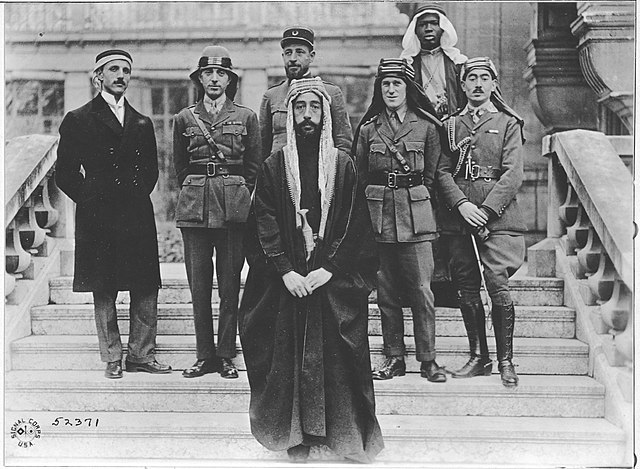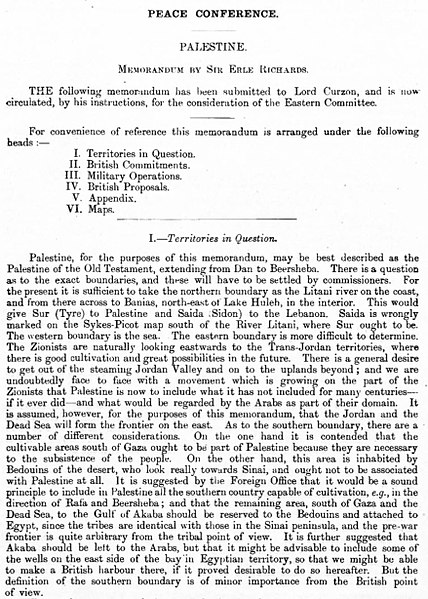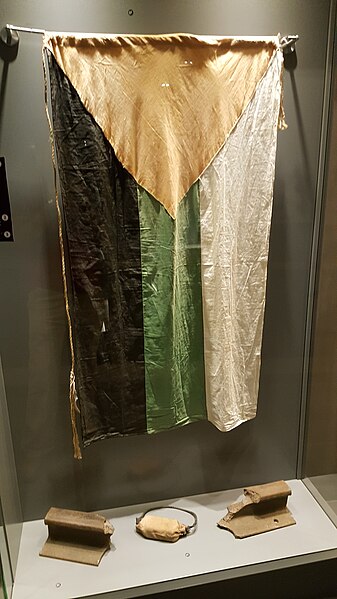McMahon–Hussein Correspondence
The McMahon–Hussein Correspondence is a series of letters that were exchanged during World War I in which the Government of the United Kingdom agreed to recognize Arab independence in a large region after the war in exchange for the Sharif of Mecca launching the Arab Revolt against the Ottoman Empire. The correspondence had a significant influence on Middle Eastern history during and after the war; a dispute over Palestine continued thereafter.
The McMahon–Hussein letter of 24 October 1915. George Antonius—who had been the first to publish the correspondence in full—described this letter as "by far the most important in the whole correspondence, and may perhaps be regarded as the most important international document in the history of the Arab national movement... is still invoked as the main piece of evidence on which the Arabs accuse Great Britain of having broken faith with them."
Minutes of the Paris Peace Conference 1919. The correspondence was described by David Lloyd George as "the Treaty with the Arabs"
Emir Faisal's party at Versailles, during the Paris Peace Conference of 1919. At the centre, from left to right: Rustum Haidar, Nuri as-Said, Prince Faisal, Captain Pisani (behind Faisal), T. E. Lawrence (known as "Lawrence of Arabia"), unknown, Captain Tahsin Qadri.
P 49 British memorandum on Palestine for 1919 Peace Conference
The Arab Revolt, also known as the Great Arab Revolt, was an armed uprising by the Hashemite-led Arabs of the Hejaz against the Ottoman Empire amidst the Middle Eastern theatre of World War I.
Soldiers of the Sharifian Army carrying the flag of the Arab Revolt in southern Yanbu
The flag of the Arab Revolt in the Martyrs' Memorial, Amman, Jordan.
Lawrence at Rabegh, north of Jeddah, 1917.
Lawrence of Arabia after the Battle of Aqaba.








